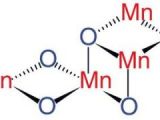All fossil fuels contain the sunlight energy stored in biochemical compounds by ancient organisms through photosynthesis.
Photosynthesis is the process that introduces energy in the chain food of practically all living communities.
Trough photosynthesis, water and carbon dioxide are transformed in biochemical products, which store in their chemical bounds solar energy and oxygen is a by-product of the whole process.
A research has shed light on an important detail in this process.
Recently, German scientists have determined the structure of photosystem II complex (inside the chlorophyll's organization), essential in photosynthesis, being responsible for water splitting.
In addition to oxygen, the water molecules release protons and electrons which can be combined to create hydrogen.
Reproducing this natural process would deliver people with an inexhaustible source of energy, which is totally not contaminant as the only by-product of hydrogen burning is water.
But to achieve the technique of obtaining hydrogen using sunlight, scientists must first understand how living organisms do it through photosynthesis.
The researchers have now determined the precise structure of the part of the molecular cluster containing manganese responsible for water splitting.
Previous techniques have been inefficient in detecting the molecular structures.
There are four manganese, one calcium and at least five oxygen atoms linked together in the complete cluster.
"The secret is in their geometric arrangement. We discussed at least 18 models for the arrangement of just the manganese and oxygen atoms," said Dr. Johannes Messinger, senior research scientist at the Max Planck Institute in M?lheim.
Experimental and theoretical work revealed the real geometrical model of the atoms arrangement in the cluster.
The cluster is constructed of three linked rhombi: two of the manganese and oxygen atom rhombi share an edge, so that both one manganese and one oxygen atoms have three bond partners.
Another manganese atom is even neighbored by four oxygen atoms as the third rhombus is attached to it.
"We have also calculated the distances between the individual manganese atoms," said Messinger.
Scientific community have previously known that the manganese atoms were not all separated by the same distance but the new research pointed the relative distances between manganese atoms through experiments (particularly those with EXAFS measurements) and from theoretical considerations.
The experimental outputs were compared with all the theoretically possible atom arrangements, assessing were they fit.
"In the end there was only one arrangement for the four manganese atoms with the bridging oxygen atoms," said Messinger.
Still, scientists have to determine the orientation of the cluster in the protein of photosystem II and the calcium position.
EXAFS (Extended X-ray Absorption Fine Structure) measurement system was further developed for their investigations.
EXAFS determines exactly the atoms species and the distance between them.
Previous studies tried to detect manganese position using X-ray structure analysis, but the necessarily high doses of radiation damaged the structure of the cluster.
To avoid molecular damage, the researchers used the low radiation doses of the EXAFS method and replaced the crystal repeatedly after short periods of measuring in the synchrotron beam.
"We now have a structural basis with which to understand the different stages of reactions in the process that uses sunlight to split water," told Messinger.
"This is an important step towards developing artificial catalysts for regenerative hydrogen production."
Image credit: Johannes Messinger.

 14 DAY TRIAL //
14 DAY TRIAL // 
